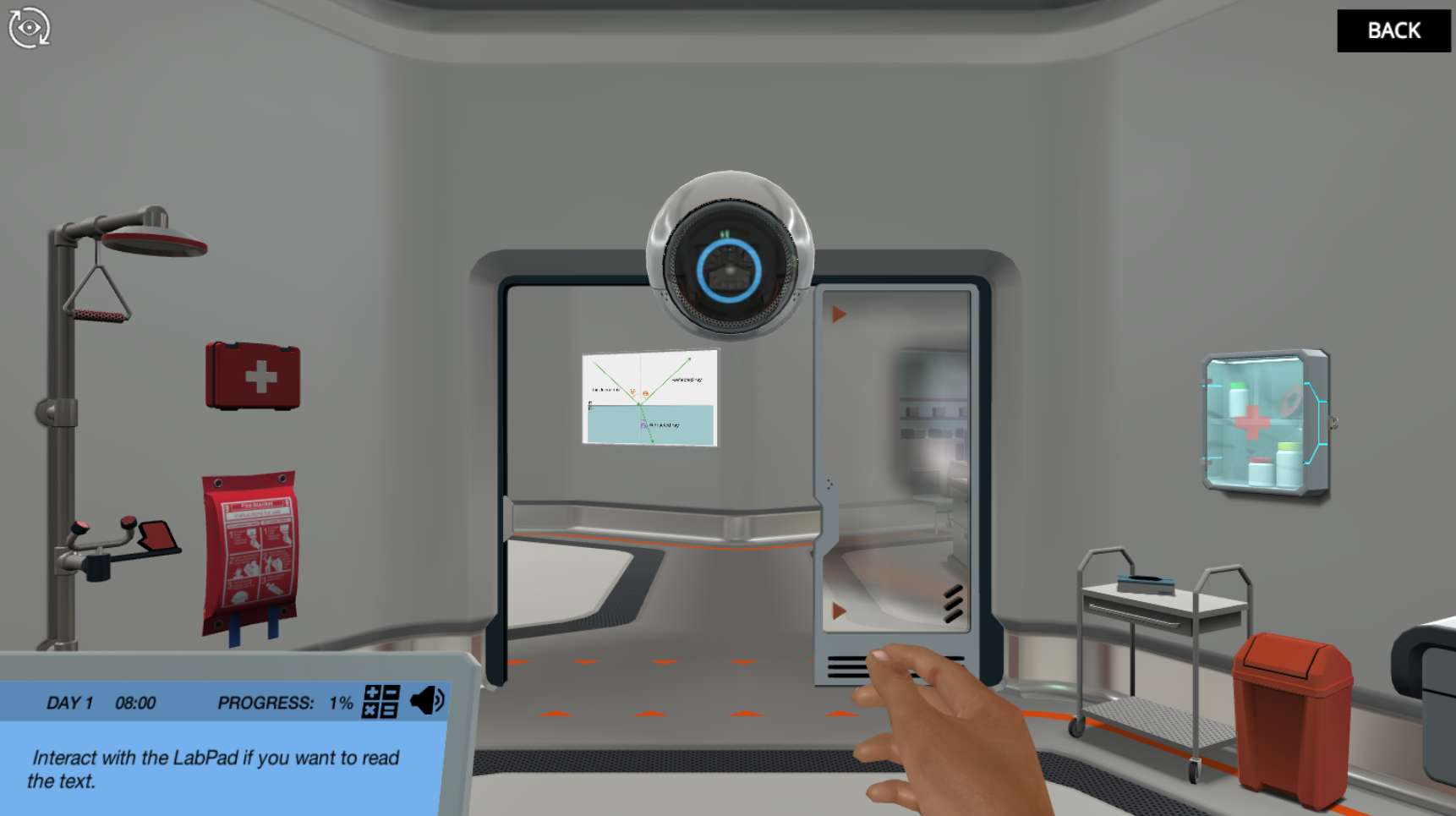Heading 1
Heading 2
Heading 3
Heading 4
Heading 5
Heading 6
Lorem ipsum dolor sit amet, consectetur adipiscing elit, sed do eiusmod tempor incididunt ut labore et dolore magna aliqua. Ut enim ad minim veniam, quis nostrud exercitation ullamco laboris nisi ut aliquip ex ea commodo consequat. Duis aute irure dolor in reprehenderit in voluptate velit esse cillum dolore eu fugiat nulla pariatur.
Block quote
Ordered list
- Item 1
- Item 2
- Item 3
Unordered list
- Item A
- Item B
- Item C
Bold text
Emphasis
Superscript
Subscript
About This Simulation
Discover what types of radiation make up the electromagnetic spectrum and the uses and dangers of each type.
Learning Objectives
- Use the electromagnetic spectrum to classify waves based on their wavelength and frequency
- Examine the relationships among the frequency, wavelength, and speed of waves
- Evaluate the damage to living cells by electromagnetic radiation
About This Simulation
Lab Techniques
- Interactive animations
Related Standards
- HS-PS4-1, HS-PS4-4, HS-PS4-5
- 10.1 Properties of Waves (this module is mainly part of AP physics 2)
- 4.2 Travelling waves
- 4.4 Wave behaviour
Learn More About This Simulation
Electromagnetic radiation is all around us. In this simulation, you will learn about the electromagnetic spectrum. Join your virtual assistant Dr. One in a physics lab where you will interact with different types of electromagnetic radiation to find out their uses in everyday life and potential dangers to living things – don’t worry, you will be perfectly safe in the virtual lab!
The electromagnetic spectrum
Join Dr. One in their physics lab and find out what links UV radiation to the microwave in your kitchen! You will learn how to define the waves that make up the electromagnetic spectrum and the two wave components by interacting with diagrams and quizzes.
Wavelength and frequency
See how everyday objects produce waves of various frequencies and wavelengths that define the electromagnetic spectrum. Discover how speed, wavelength and frequency are related. Some of the waves are visible, while others are not. But don’t worry, even though you cannot see them in real life, there are no restrictions in a virtual simulation!
Uses and dangers of electromagnetic radiation
Interact with different objects to find out how electromagnetic radiation is used outside of the lab. Food preparation, communication, cancer therapy, medical imaging and even just seeing the world around you all involve electromagnetic radiation. Some types of radiation can cause damage to living cells, so they will need to be handled with care – but don’t worry, Dr. One will keep you safe and teach you how to stay safe in the real world too!
For Science Programs Providing a Learning Advantage
Boost STEM Pass Rates
Boost Learning with Fun
75% of students show high engagement and improved grades with Labster
Discover Simulations That Match Your Syllabus
Easily bolster your learning objectives with relevant, interactive content
Place Students in the Shoes of Real Scientists
Practice a lab procedure or visualize theory through narrative-driven scenarios


FAQs
Find answers to frequently asked questions.
Heading 1
Heading 2
Heading 3
Heading 4
Heading 5
Heading 6
Lorem ipsum dolor sit amet, consectetur adipiscing elit, sed do eiusmod tempor incididunt ut labore et dolore magna aliqua. Ut enim ad minim veniam, quis nostrud exercitation ullamco laboris nisi ut aliquip ex ea commodo consequat. Duis aute irure dolor in reprehenderit in voluptate velit esse cillum dolore eu fugiat nulla pariatur.
Block quote
Ordered list
- Item 1
- Item 2
- Item 3
Unordered list
- Item A
- Item B
- Item C
Bold text
Emphasis
Superscript
Subscript
A Labster virtual lab is an interactive, multimedia assignment that students access right from their computers. Many Labster virtual labs prepare students for success in college by introducing foundational knowledge using multimedia visualizations that make it easier to understand complex concepts. Other Labster virtual labs prepare learners for careers in STEM labs by giving them realistic practice on lab techniques and procedures.
Labster’s virtual lab simulations are created by scientists and designed to maximize engagement and interactivity. Unlike watching a video or reading a textbook, Labster virtual labs are interactive. To make progress, students must think critically and solve a real-world problem. We believe that learning by doing makes STEM stick.
Yes, Labster is compatible with all major LMS (Learning Management Systems) including Blackboard, Canvas, D2L, Moodle, and many others. Students can access Labster like any other assignment. If your institution does not choose an LMS integration, students will log into Labster’s Course Manager once they have an account created. Your institution will decide which is the best access method.
Labster is available for purchase by instructors, faculty, and administrators at education institutions. Purchasing our starter package, Labster Explorer, can be done using a credit card if you are located in the USA, Canada, or Mexico. If you are outside of North America or are choosing a higher plan, please speak with a Labster sales representative. Compare plans.
Labster supports a wide range of STEM courses at the high school, college, and university level across fields in biology, chemistry, physics, and health sciences. You can identify topics for your courses by searching our Content Catalog.















